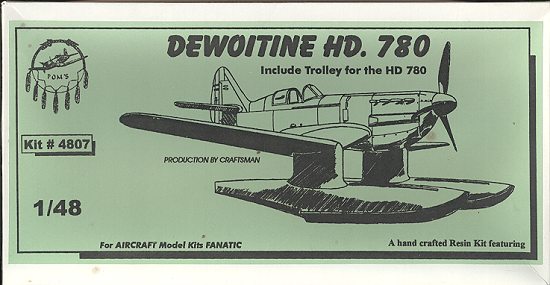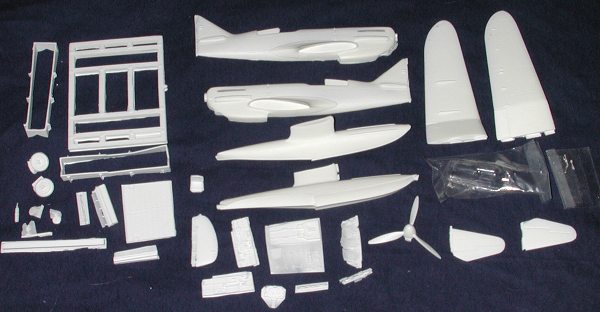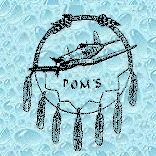
|
KIT: |
Pend Oreille 1/48 Dewoitine HD.780 |
|
KIT # |
4807 |
|
PRICE: |
$42.50 |
|
DECALS: |
One aircraft |
|
REVIEWER: |
|
|
NOTES: |
Resin kit |

|
HISTORY |
At the start of the Second World War, France realized that it needed fighter protection for the fleet when it was at sea. It had no real aircraft carriers, so the only real option was a floatplane fighter that could be carried aboard those ships equipped with catapults. Two designs were submitted and the Dewoitine HD 780 was chosen. One reason was that it was strongly based on the D.520 and time was essential. Prototype construction started in November 1939 and was finished in April 1940. Though really only the wings were new on this plane, the radiator was moved farther forward to keep it from ingesting water during take-off (which was bad). The stabilizer was also increased in area. Despite two prototypes being completed, the type never flew as the French Navy had changed its mind about the type. It decided to concentrate on a carrier-capable D.520; the D.790, which was never built as France surrendered to the Germans just a few months later and work on new types basically came to a halt.
|
THE KIT |

If you have never seen or built a Pend Oreille kit, you really should look into it. This kit is quite typical, being molded in a high quality white resin. In most respects, it looks just like an injection molded styrene kit. There are two fuselage halves, a detailed interior with side panels, rudder pedals, control stick, and instrument panel. The rudder is a separate piece with horizontal stabs that are but fitted. The wings have large slots in the fuselage half that it fits into. The floats are a single resin cast and butt fit on the 'gull' of the wing. A full beaching dolly is included and makes up a sizeable percentage of the kit.
The castings are superbly engraved and well formed. I looked over my parts for any glitches and found only a few. One was a rather large air bubble in the left wing, which will be quite easy to repair. There is also some mold flash and a couple of areas that have some errant resin attached to them. Careful sanding will easily remove these. A couple of very thin constructs for the beaching dolly were slightly warped. A few minutes treatment with hot water will easily take care of that. The rest of the parts will need to be removed from the resin casting blocks or wafers. Fortunately, these areas are small so should be a breeze to clean up. Thankfully, two vacuform canopies are provided.
 Instructions are very well done
with detail work showing how some of the more intricate parts of the interior
and beaching dolly are done. There is also a list of parts and a short history
of the type as well as a painting and decaling guide for the first prototype.
The aircraft is easy to paint with the upper surfaces being French Dark Sea Blue
and the underside being Sky Blue. The decals are well printed, though the blue
seems to be too light to me. I'll also admit to having less than good luck with
P.O. decals though I'll withhold judgment on these until I actually use them.
Fortunately, there are no unit badges or anything so aftermarket decals should
work quite well of they are needed.
Instructions are very well done
with detail work showing how some of the more intricate parts of the interior
and beaching dolly are done. There is also a list of parts and a short history
of the type as well as a painting and decaling guide for the first prototype.
The aircraft is easy to paint with the upper surfaces being French Dark Sea Blue
and the underside being Sky Blue. The decals are well printed, though the blue
seems to be too light to me. I'll also admit to having less than good luck with
P.O. decals though I'll withhold judgment on these until I actually use them.
Fortunately, there are no unit badges or anything so aftermarket decals should
work quite well of they are needed.
|
CONCLUSIONS |
Overall, I'd say that this will be a painless build and make a most interesting aircraft, at least one you won't see every day. It is even a kit that I'd say a relative new-comer to the genre would be able to successfully complete.
 Review copy courtesy of Pend
Oreille. You can get this and other fine Pend Oreille kits direct from the
website. They now accept credit cards.
Review copy courtesy of Pend
Oreille. You can get this and other fine Pend Oreille kits direct from the
website. They now accept credit cards.
If you would like your product reviewed fairly and quickly by a site that has well over 175,000 visitors a month, please contact me or see other details in the Note to Contributors.